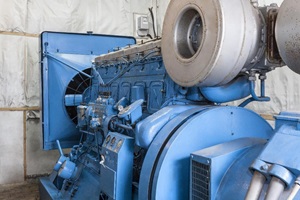- Energy Technologies
- Energy Technologies
- FERC Order 755
- Energy Storage
- Virtual Power Plants
Overcoming Hurdles to Monetizing Value Streams from Energy Storage Systems

Federal Energy Regulatory Commission (FERC) Order 755 requiring regional transmission organizations (RTOs) and independent system operators (ISOs) to implement a pay-for-performance structure for frequency regulation service has been instrumental in demonstrating the benefits that fast-responding resources like battery energy storage systems (BESSs) can provide to the grid. For example, since Order 755’s implementation, PJM experienced a 30% reduction in overall regulation reserve requirements as more fast-responding resources have cleared the market. However, despite the early regulation successes in PJM, storage directly connected to a distribution system (known as front-of-meter, or FTM) continues to faces uncertainty and barriers in the United States associated with rate treatment.
On another front, energy storage stakeholders now recognize that BESSs connected to the distribution system from behind the meter at a residential and/or commercial & industrial customer’s property can deliver benefits to the host, RTOs/ISOs, and utility distribution system operators. This evolution is driving the development of software and hardware platforms that can analyze, control, and optimize not only a single BESS, but also aggregated BESSs. These advances are now giving rise to energy storage assets that can recognize multiple value streams by stacking grid benefits in virtual power plants (VPPs).
Regulations and Requirements
However, regulatory eligibility and performance requirements for aggregated behind-the-meter battery energy storage assets have not caught up with these technological advances. To date, there has been limited participation by energy storage in demand response markets, and several instances demonstrate how wholesale market rules are missing opportunities for these assets to provide multiple grid benefits. For example, the CAISO Proxy Demand Resource (PDR) prohibits a VPP from providing frequency regulation, even though the systems would be technically capable of doing so. And in ISO-NE and NYISO, Northeast Power Coordinating Council rules prohibit behind-the-meter energy storage from providing spinning/synchronized reserves.
At the Energy Storage North America (ESNA) expo in October, a panel discussion will feature case studies from across the country on the challenges, feasibility, and economics of how single BESSs and VPPs can stack energy storage value streams. Don’t miss out on the conversation—register for ESNA today.